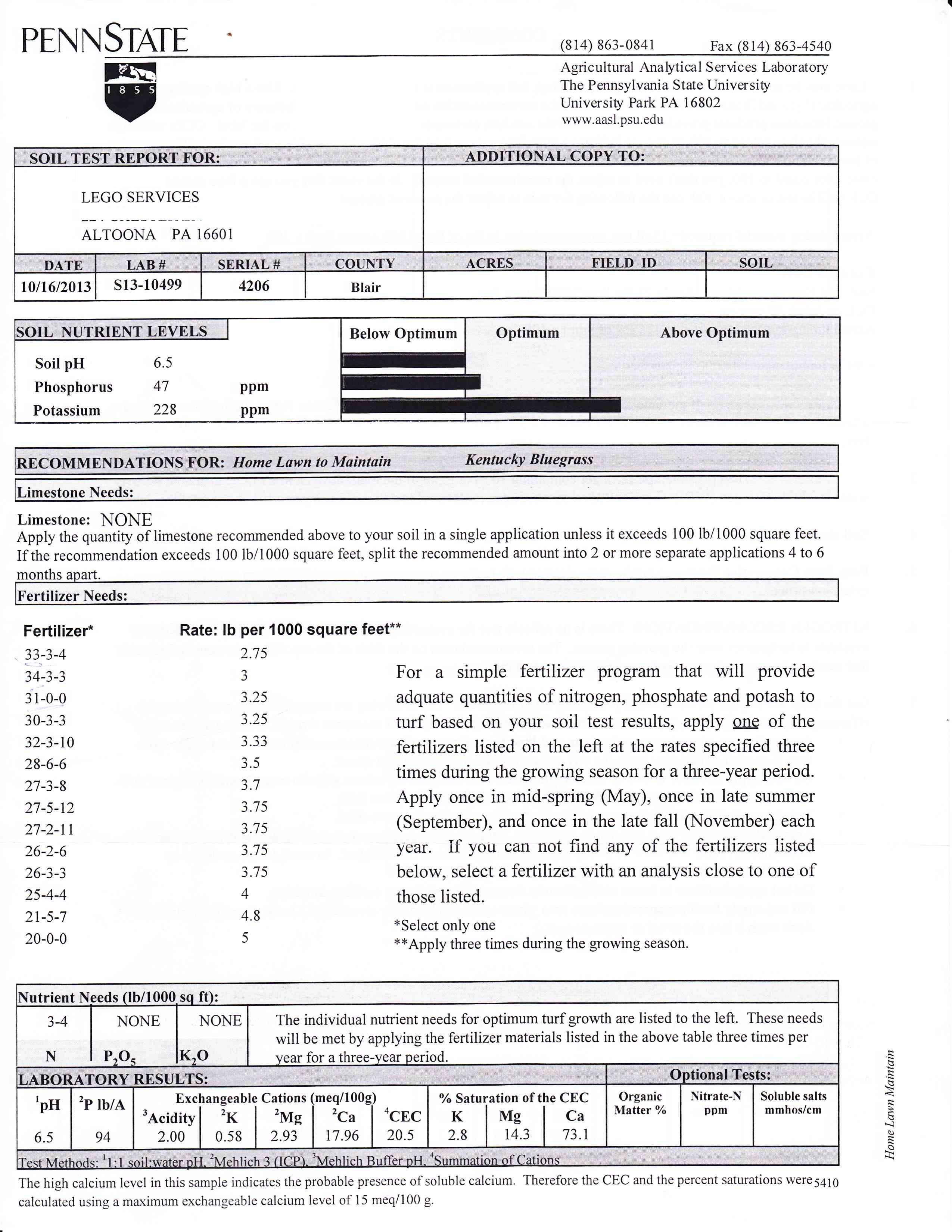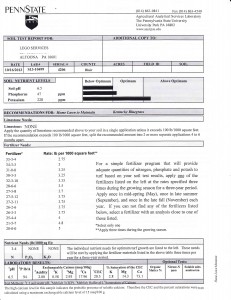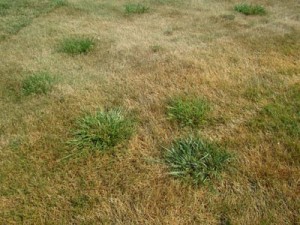
Soil Test Results
Located in Central Pennsylvania and just looking for a soil test service? Great! Contact us for more information. Interested in learning what it all means? Great! Read on ..
The results behind a soil test may look cumbersome, but really they are not. It comes down to three important factors based on your specified grass type.
The Soil pH level, the Phosphorus level, and the Potassium level.
Each turf type requires an optimum blend of three nutrients, and a test is designed to show you exactly where those levels are currently at. Depending on the company or lab where your test is diagnosed, easy to understand recommendations are printed out with instructions that, if followed correctly, will balance your nutrients out to optimum across the chart.
For an example using the following image, if your lawn is low in pH, optimal in Phosphorus, and high in Potassium, a list of fertilizers and the rate for pound per square footage the fertilizer should be spread is listed. Since the pH level is low, you will want to increase that of course. But what fertilizer are you going to need. The paper shows a 33-3-4, so lets look at what that means.
Every time you read a bad of fertilizer it lists three numbers, ##-##-##. What are those three numbers? They represent three nutrients, N, P2O5 and K2O – or easily enough Nitrogen, Phosphorus, and Potassium.
Nitrogen..
is the primary found in most fertilizers. Many times you will hear,
“If you want a green lawn, add nitrogen”
While that is true, be careful. The greener your grass, the more photosynthesis that can occur (that is your lawn eating, BTW). Buttt to much nitrogen can easily ruin your lawn. So don’t just spread a Nitrogen rich fertilizer and expect great results. Remember, your lawn needs a complimentary blend of the Three nutrients to look (and be) its healthiest. To much nitrogen the lawn is going to grow like a bad weed, causing more cutting, which causes the grass more stress and then oh no…
To much stress…
Phosphorus
The second number that dominates fertilizer ingredients. Inside your grass there are energy-rich phosphate bonds that fuel the “metabolic machinery” and ultimately growth. Without Phosphorus, leaf, root, and stem growth slows dramatically. Phosphorus also helps keep higher quality soil, denser, absorbing more water.
The root systems of your lawn benefits greatly from Phosphorus. But be careful not to smother your lawn with to much phosphorus, that can be another factor of stress, and we know where that leads to.
Phosphorus can be dangerous not only to the lawn, but to the environment if to much is used. Some states are promoting a no P fertilizer program (No phosphorus). Phosphorus can cause algae build up in water which has caused ecological unbalancing. But did you know pollution from Phosphorus can be WORSE by letting the levels get to low? Strange, but when the soil becomes less dense, water runoff (Phosphorus run off..) is higher.
Potassium
I don’t know why, but whenever I hear Potassium the first thing I think of is bananas. Odd first thought, I know.
Potassium is key for strong root formation and plant health overall. It is responsible for playing a role in keeping your turf alive during the winter, fending off disease, and fungus problems. Let the levels get to low and you are opening the door for a ton of problems ranging from ring spot, red threat, neuritic ring spot, etc. etc. etc.
So..
Hopefully this post helps you understand test results easier and the basic needs of your lawn. Your lawn grows in soil, the key to a lush green lawn is perfectly aerated, nutrient rich, worm loving all around awesome soil. And a soil pH test – I am assuming you want a beautiful lawn, you are reading this after all – should be on your list every Spring if possible.
Need some help? Great – that is why we are in business. We can help you figure out the result & create a plan (no charge!) , or we can perform the test, diagnose the results, and formulate a plan of action for a one time low fee. Simply follow the link on the top right of the page or click here -> “Contact us“
By the way, from the list above my recommendation would be the 33-3-3 fertilizer, raise Nitrogen while effecting Phosphorus and Potassium as minimal as possible.

